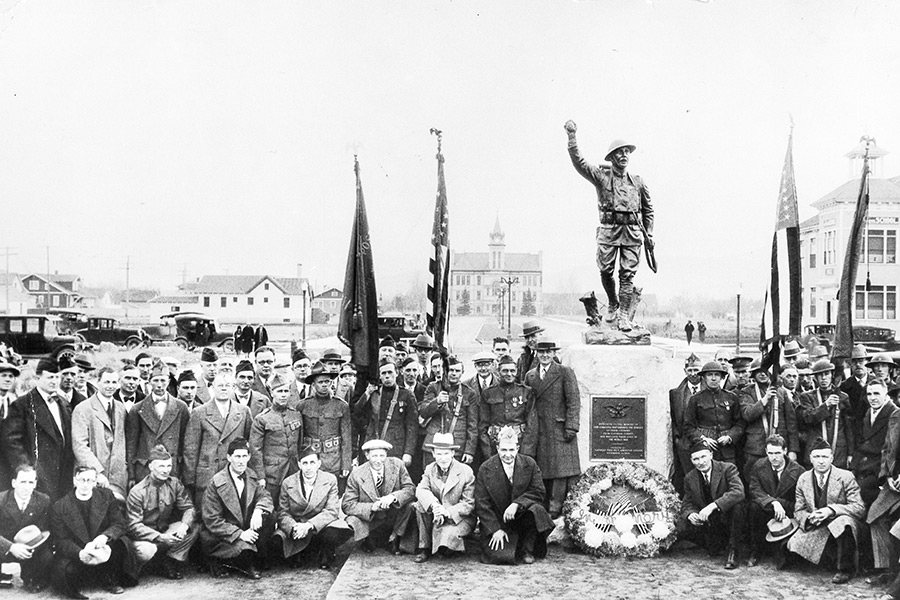The early 20th century saw Montana as a young state, just over a decade old. Mines were booming, the state was discovering its identity, and a new century was brimming with potential.
However, by 1917, America was involved in what was then called the Great War, the war that was supposed to end all wars. Montanans have a long history of military service; its population has served its country in higher percentages than most states.
From 1917 to 1918, more than 1,550 Montanans died as a result of World War I, with nearly 2,470 returning wounded, according to information compiled by Chester K. Shore in “Montana in the Wars.”
More than 12,500 Montanans volunteered for military service, followed by another 28,000 who were drafted, according to “Montana: Stories of the Land,” from the Montana Historical Society.
By the end of the 1920s, America would face another of its greatest challenges in the Great Depression. In Montana, farmers were still dealing with a 10-year drought that had started in 1917 when the national economy crashed in 1929.
Crop and beef prices fell and employment was incredibly difficult to come by – mines and smelters across the state laid of employees by the thousands; the Anaconda Copper Mining Company cut its production levels by 90 percent, according to “Montana: Stories of the Land.”
The Depression changed the face of the state, not only in the personal outlook of its inhabitants, but also in the work projects performed during this time. By the mid-to-late 1930s, President Franklin Roosevelt’s New Deal was creating jobs for Montanans through various agencies, including the Civilian Conservation Corps.
In the CCC, young men 17 to 25 years old were hired to work in national parks and forests, state forests and campgrounds. They fought fires, built trails, built fire lookouts, planted trees and more.
According to the Forest History Society, CCC enrollees in the Flathead National Forest, were responsible for removing snags left by the 1929 fires, building picnic tables, widening and maintaining roads, and building campgrounds, fences, phone lines and bridges.
The CCC also worked in Glacier National Park, with almost 1,300 enrollees from 1933 to 1941. They fought fires, built trails, cleared campsites, and graded roads. A sawmill in Apgar churned out lumber, fence posts and phone poles.
The Works Progress Administration hired 20,000 Montanans to build roads, bridges, airports and water systems, including sewers. The WPA also put artists to work, including those who created the now-iconic posters urging tourists to visit Montana.
By 1937, the crops were strong again, and more Montanans were trained for industrial jobs, thanks to jobs they had during projects like the construction of the Fort Peck Dam.
By the end of 1941, the United States was involved in World War II, and the war effort was a boon for the state’s economy, with more demand for raw materials and food production.
Montanans kept to their historic participation rates, with more than 57,000 serving during the war’s duration, or roughly 10 percent of the population at that time. According to the National Archives, more than 1,500 Montanans were killed in the war.
By the end of September 2014, the U.S. Department of Veterans Affairs showed 3,987 World War II veterans still living in Montana.
The first half of the 20th century was brutal and trying, but it forged what would become the Greatest Generation, and changed the face of the state.
